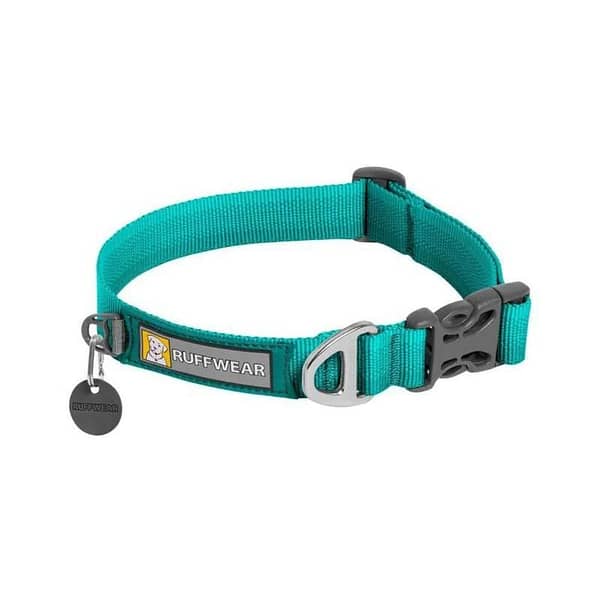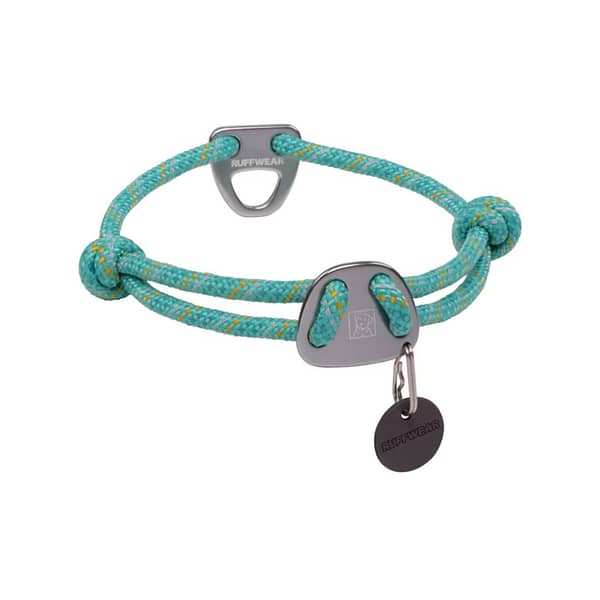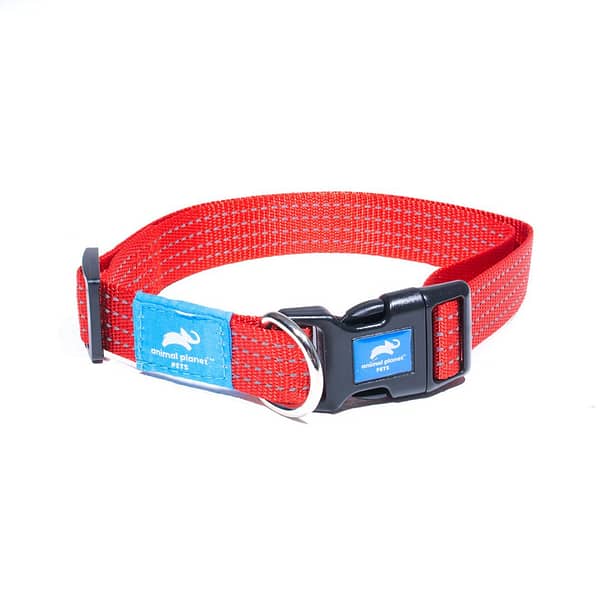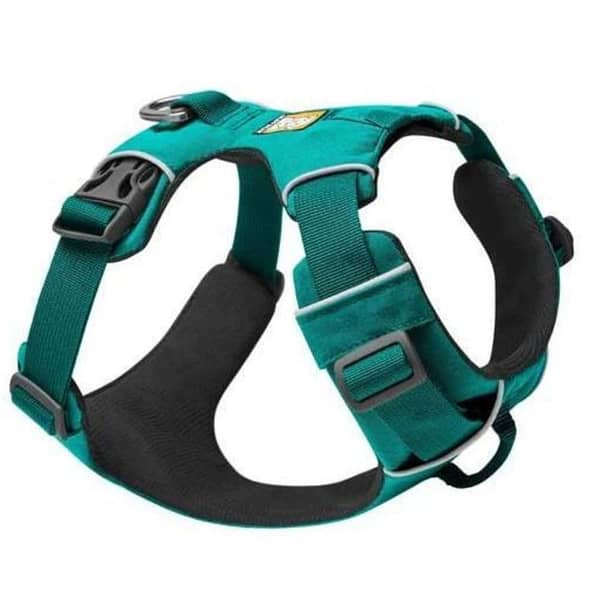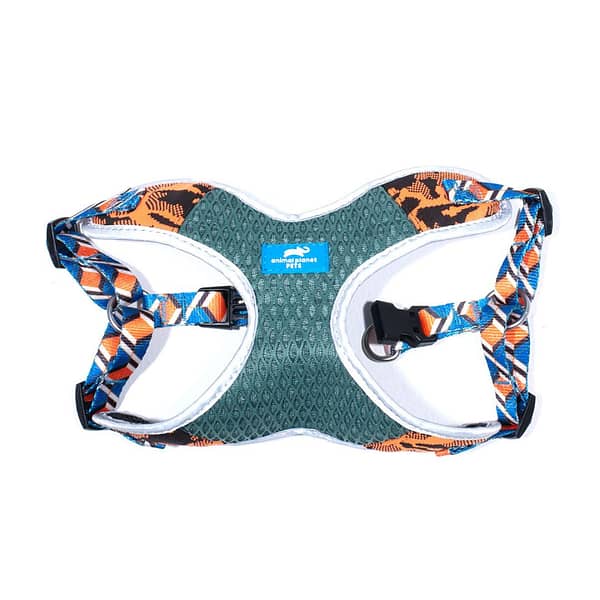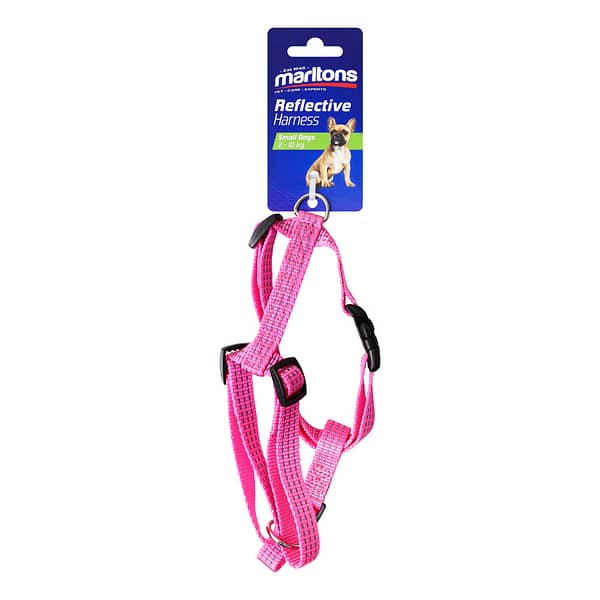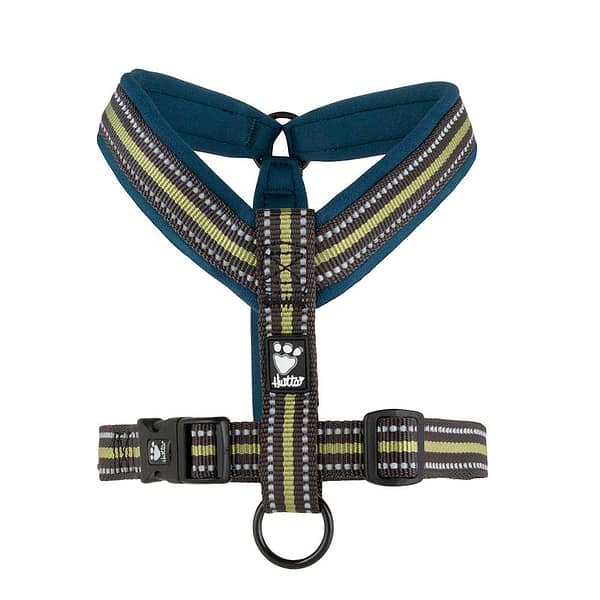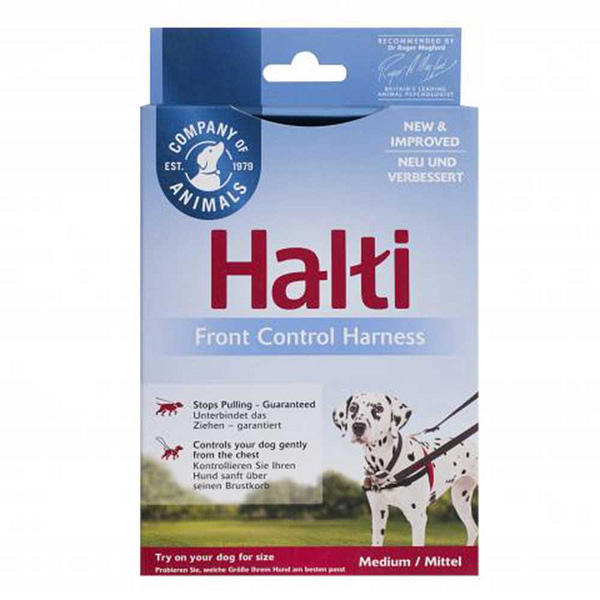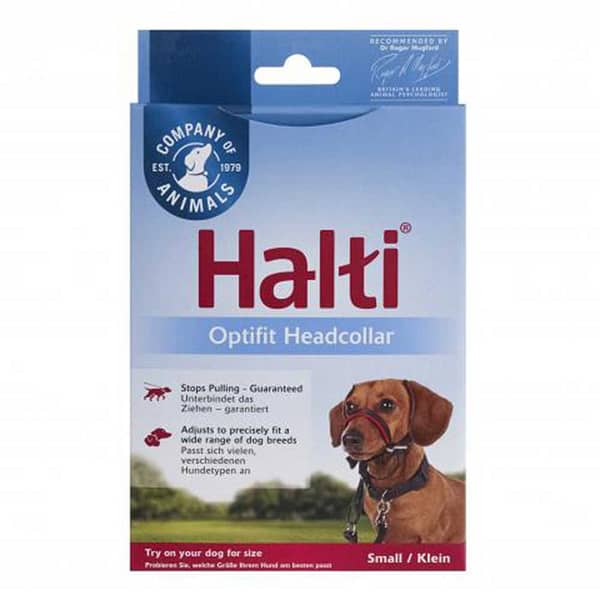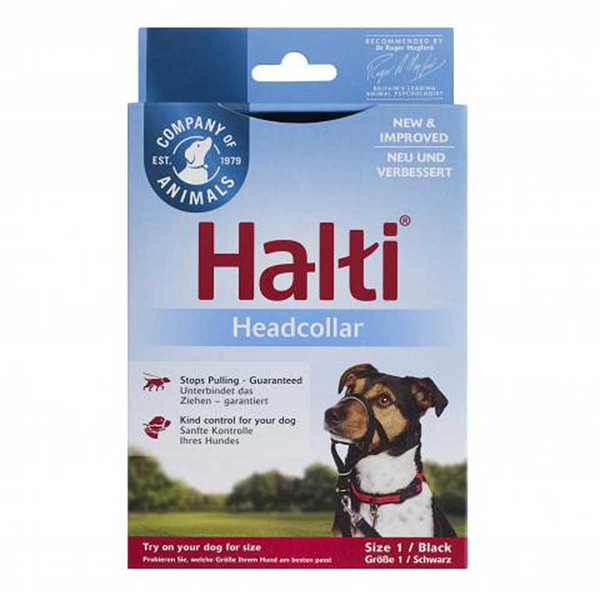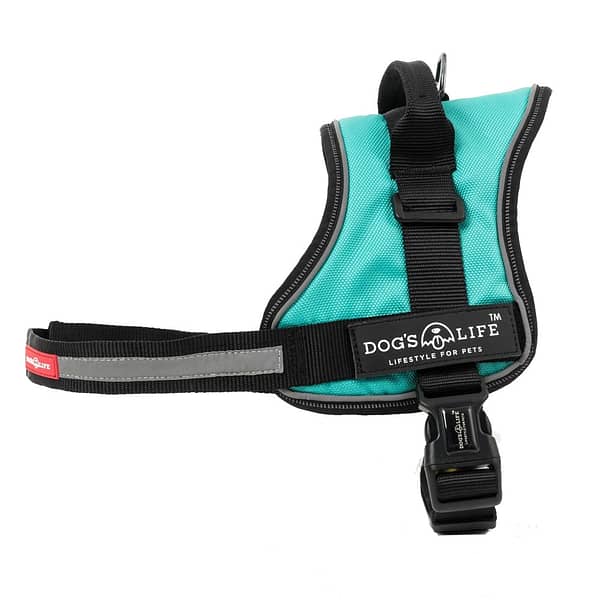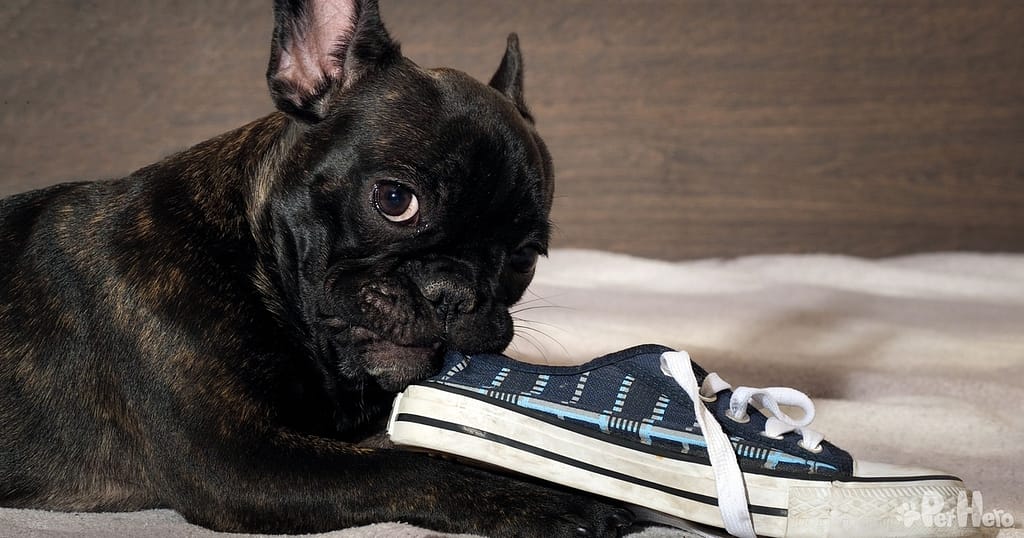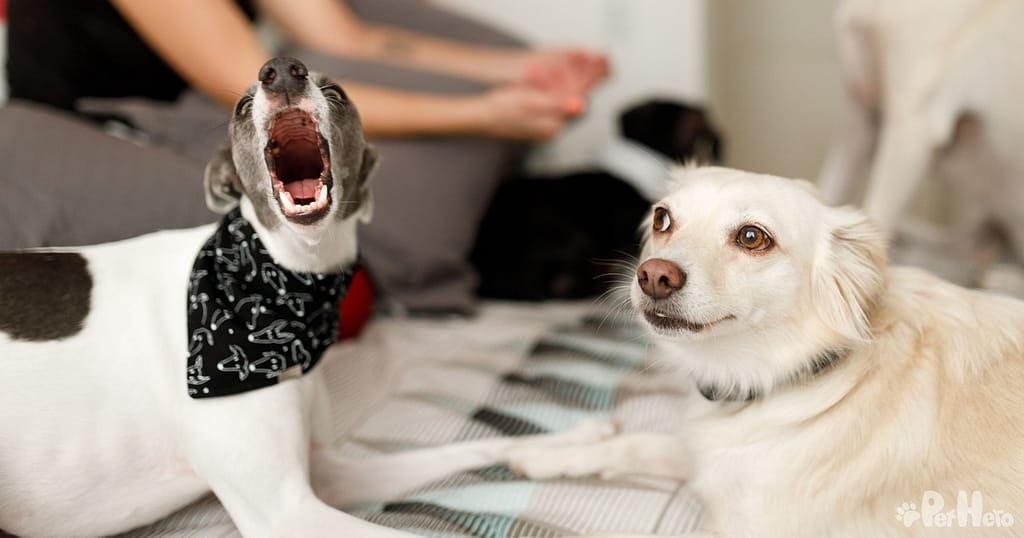The one thing that most dogs’ ears are more attuned to than the sound of the treat bag, car keys, and your voice, is the clink of the clip on their leash. It’s one of the sounds that triggers everything from zoomies to barking to drooling and the unrelenting excitement of a dog who knows they’re going on walkies!
No matter how quietly you think you’ve taken your dog’s leash off the hook on the back door, they’ve heard it… and their enthusiasm for what’s about to happen has launched into the stratosphere like a dog-shaped rocket.
The quality and safety of the walkies you’re about to embark on are determined by many things, but one question stands out above all others: which is better for walking your dog – a harness or a collar? In this article on harness vs collar, we explore the pros and cons of both accessories, and settle the debate once and for all.
Is it better to use a collar or harness?
The ultimate answer to this question is… it depends. Yup, frustrating, we know. But there’s a very good reason for the open-endedness of this question.
Just like collars and harnesses, there is no one-size-fits-all answer for which walking accessory is better for your dog. In short:
- some dogs will walk fine on both a collar or a harness
- some dogs can get hurt by a collar (especially the little breeds – we’ll explain why in a sec)
- some dogs can get hurt by a harness
- some dogs will easily slip out of a collar or a harness
- some dogs will pull on their leash – it doesn’t matter whether it’s attached to a collar or harness; they are determined
You’re lucky if your dog appears to have taken naturally to a collar or harness from the outset, and walks politely next to you on your morning jaunt. Count yourself pawtunate! Many dogs have terrible leash manners, pull their owners all over the place, and have sent their humans to the physiotherapist for shoulder, elbow and wrist problems. The answer to getting a dog to walk with a loose leash (i.e. not to pull on the leash while walking) is proper, consistent, positive training, with a focus on looking to you – the dog handler; the pet hero – for direction.
No collar or harness is a substitute or a shortcut for good leash training. So make sure you have control over your dog before slipping their collar on or attaching their harness.
All about dog collars
Buying a dog collar seems to be an automatic reflex for new and experience dog owners alike. It’s a staple accessory for your dog because it doesn’t just give you somewhere to clip their leash, but it’s part of their identity. A dog wearing a collar says: “I’m spoken for. I’m somebody’s pet.” The D-ring on a dog collar gives you a place to attach your dog’s ID tag, which has your address and/or contact information engraved on it. Should they get out of the yard or be separated from you for whatever reason, your dog’s ID tag will give the first conscientious person somewhere to contact you (although this is no substitute for a microchip implant, since collars can easily be removed).
As you can see, a collar serves a greater purpose than attaching a leash to your dog – it functions as a name tag and a signal that your dog belongs to you. When it comes to walking your dog, a collar may or may not be the right accessory, here’s why:
The advantages of a dog collar
- Lots of different types, sizes and styles to choose from.
- Easy to measure and fit a dog collar.
- Easy to use when your dog knows how to walk on a leash – pressure on a collar tells your dog they need to refocus on you.
- Gives you more control over your dog’s movement, without requiring an immense amount of physical strength.
The disadvantages of a dog collar
- If your dog’s head is smaller than (or more or less the same size as) their neck – think greyhound, pug, Peke, Boston terrier – they may easily slip out of their collar. Don’t be tempted to tighten the collar, as this can make it difficult for them to breathe or swallow… and no one wants to be having those problems while on walkies!
- Dogs that are not properly leash trained will pull on their leash. If they are wearing a collar, this can place pressure on their throat and also cause injury to their neck and back. Yanking on the collar doesn’t teach a dog not to pull, but here is a technique that will.
- Some small, miniature and toy breeds are susceptible to a genetic condition that weakens the cartilage in their trachea. During inhalation or exhalation, the trachea isn’t strong enough to stay open and collapses on itself – causing rasping, wheezing or coughing. Dogs that are susceptible to tracheal collapse should never wear a collar. These include: papillon, affenpinscher, Pomeranian, Maltese, French bulldog, Chihuahua and Yorkie (among other small breeds).
All about dog harnesses
A dog harness offers another way of attaching your dog’s leash to your dog when you want to take them for a walk. Unlike a collar, a harness fits around your dog’s body, distributing the pressure equally so that it doesn’t only affix to one point (i.e. the neck, as with a collar). Is a dog harness better than a collar? Well – again – that depends on the dog. Some dogs are encouraged to pull when they wear a harness. Other dogs feel more comfortable in a harness and are easier to train when they’re not constantly resisting against the pull of a collar.
The advantages of a dog harness
- Offers a safer option for dogs that have neck, back and tracheal problems. Doesn’t impede brachycephalic (short-snouted) dogs.
- Prevents dogs with smaller heads from slipping out of your grip.
- Offers a more comfortable walk for both you and your dog, especially for those dogs with back and shoulder pain.
- A great tool for leash training a puppy.
- Prevents dogs from pulling, especially when using the front clip – but you still need to teach your dog to do loose-leash walking; or walk to heel. A harness can be a great tool during this teaching process, as it has multiple points on which to clip a training leash, and can give your dog additional cues for what you want them to do.
The disadvantages of a dog harness
- Not all dog trainers agree on this, so it largely depends on the dog (and the owner): If your dog is prone to pulling, a harness can encourage more pulling, especially for dogs originally bred for harness work – such as huskies, Malamutes, Canadian Inuit and Samoyeds. These breeds will need lots of extra leash training before they can loose-leash walk with a harness. That being said, a miniature pinscher can be just as much of a leash puller as a sled dog, so leash training is impawrative!
- Can be more difficult to put on and remove from your dog.
- Not all dogs are shaped to wear a standard harness. Deep-chested dogs like greyhounds and whippets need a harness that matches their high chest to hip ratio.
- If you have a large dog in a harness and he startles and decides to lunge or run, the harness will give him maximum body leverage – meaning you will need to be very strong to keep him under control.
Specialised collars and harnesses
All dogs are different – they all have different personalities, different learning abilities, different relationships with their humans, and different physical, mental and emotional capacities. This is impawtant to keep in mind when choosing the right collar or harness for your dog. If you have followed all the advice in YouTube dog training videos, enlisted the help of a dog trainer or behaviourist, or adjusted your training methods to suit your dog’s temperament, you may have come across different collars, harnesses and training tools for dogs who need additional help when learning loose-leash walking.
These may include:
Halti head collar
Some dogs just refuse to focus on their owners – everything else that can grab their attention, will. The Halti range is designed to fit comfortably around your dog’s head and snout, and to redirect your dog’s attention towards you when they pull on the leash. This is an easy-to-use solution during training – it is not a substitute for training or a shortcut to behaviour modification. Your dog’s loose-leash walking ability must still be the priority – the Halti is simply a tool to help you get there.
No-pull harness
Some stubborn, pulling dogs appear to be one-track minded. No amount of sudden stopping, changing direction, high-value treats or (gulp!) ‘leash correction’ appears to make any difference to their intent on focusing elsewhere. This is where a walking tool like a no-pull harness may come in handy. It’s designed to mechanically prevent your stubborn furry friend from hurting themselves and yanking your arm out of its socket in their attempts to get OVER THERE.
There are a range of no-pull, anti-pull, triangle and other helpful harnesses that are designed to stop your dog from pulling. It bears repeating that these should be used in conjunction with ongoing positive training.
A word on aversive collars
‘Aversive’ is the nice word for punishment; something that causes aversion or avoidance of a behaviour for fear of negative repercussions. Choke chains, prong collars, e-collars (those that deliver a ‘stimulus’ – be it an electric shock, a vibration, a burst of citronella or even a beep) don’t teach a dog to change their behaviour for a positive reward, but they stop what they’re doing out of fear or because of a negative stimulus.
A dog who responds out of fear is an anxious dog, and an anxious dog can be triggered into aggressive behaviour. Aversive collars and training techniques can genuinely damage the relationship between owner and dog, especially if the dog connects the pain of the collar with the person delivering the pain. Does aversive training work? The big question is whether a shock collar or a prong collar can be removed without the dog reverting to their old, uncontrollable self.
If you’ve reached a point of frustration with your dog that you are considering aversive tools to make them behave then it’s time to consult with a professional positive trainer or behaviourist to help you fix your dog’s issues and to rebuild a relationship of love and trust with your furry friend.
Walking accessories
Whether your dog is better suited to a collar or a harness, don’t forget the following extras that you need to take on walkies with you:
- a treat bag and a handful of yummy treats – training in unfamiliar situations is very good practice to cement your dog’s learning, especially for behaviours like loose-leash walking or leash reactivity (not reacting to other dogs, people and cars while you’re out in public)
- doggy bag dispenser
- poop bags
- water bottle
Remember that your dog’s entire life will be one long exercise in consistent training, bond-building and positive reinforcement. If they can go through life with a comfortable collar and/or a well-fitted harness, remaining in your command and control while out in public, you’re being a pet hero – both to your pup and to the wider public.
Pet Hero aims to provide you with the best products to support your journey as a pet pawrent AND the best ways to use these products for both your and your pet’s benefit. Sign up to receive our regular newsletter directly in your inbox! You’ll get more tips and tools on pet ownership, as well as first dibs on product sales, pawmotions, competitions and more!


